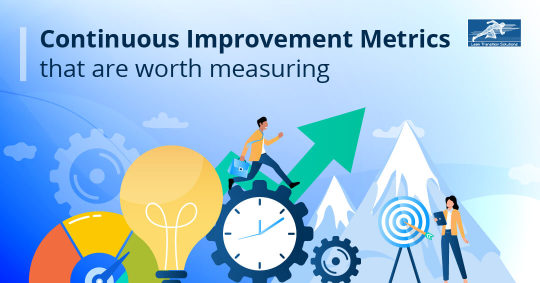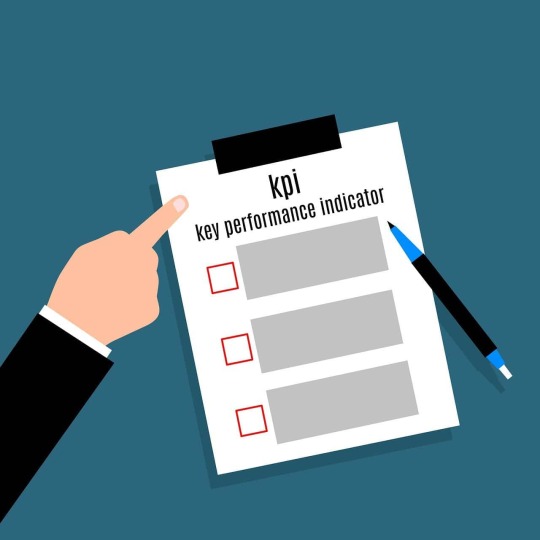#performancemeasurement
Explore tagged Tumblr posts
Text
Measuring Digital Transformation Success: Key Metrics & KPIs
Digital transformation is reshaping how businesses operate, compete, and deliver value. But how do you know if your efforts are paying off? Measuring digital transformation success is critical to understanding whether your investments in technology, processes, and culture are driving meaningful outcomes. By focusing on the right metrics and key performance indicators (KPIs), organizations can gauge progress, identify gaps, and optimize their strategies. This blog explores the essential metrics and KPIs to track, offering a clear roadmap to evaluate your transformation journey effectively.
Why Measuring Digital Transformation Success Matters
Understanding the impact of digital transformation is not just about tracking numbers—it’s about aligning your initiatives with long-term business goals. Without clear metrics, organizations risk wasting resources on initiatives that don’t deliver value. Effective measurement provides insights into what’s working, what needs adjustment, and how to prioritize future investments. It also helps communicate progress to stakeholders, fostering trust and buy-in across the organization.
The Role of Metrics in Strategic Alignment
Metrics act as a bridge between your digital transformation strategy and business objectives. They provide a quantifiable way to assess whether new technologies, such as cloud computing or AI, are improving efficiency, customer satisfaction, or revenue. By defining clear KPIs, businesses can ensure their transformation efforts are not just tech-driven but also tied to measurable outcomes that matter.
Avoiding Common Pitfalls
One common mistake is focusing solely on technology adoption, like the number of new tools implemented, without assessing their impact on performance. Another is neglecting qualitative feedback from employees or customers. A balanced approach, combining quantitative data with qualitative insights, ensures a holistic view of success.
Defining Key Metrics for Digital Transformation
To measure digital transformation success, organizations need a mix of metrics that cover operational efficiency, customer experience, employee productivity, and financial performance. Below are the core areas to focus on and the specific KPIs to track.
Operational Efficiency Metrics
Operational efficiency reflects how well your processes and systems are performing post-transformation. These metrics highlight whether new technologies are streamlining workflows or reducing costs.
Process Automation Rate: Measure the percentage of manual processes automated through tools like robotic process automation (RPA). For example, automating invoice processing can reduce time spent by 50% or more.
System Downtime: Track the frequency and duration of system outages. A successful transformation should minimize disruptions, ensuring reliable access to digital tools.
Time-to-Market: For product-driven businesses, measure how quickly new products or features are launched. Faster delivery often indicates improved internal processes.
Customer Experience Metrics
Digital transformation often aims to enhance how customers interact with your brand. These KPIs assess whether your efforts are resonating with your audience.
Net Promoter Score (NPS): This measures customer loyalty by asking how likely customers are to recommend your brand. A rising NPS suggests your digital initiatives, like a new mobile app, are improving user satisfaction.
Customer Retention Rate: Track the percentage of customers who return after their first purchase. Enhanced digital experiences, such as personalized recommendations, can boost retention.
Digital Engagement: Monitor metrics like website traffic, app downloads, or social media interactions to gauge how customers are engaging with your digital channels.
Employee Productivity and Adoption Metrics
A successful transformation empowers employees to work smarter. Tracking adoption and productivity ensures your workforce is embracing new tools and processes.
Technology Adoption Rate: Measure how many employees are actively using new systems, such as a CRM platform. Low adoption may signal a need for better training.
Employee Productivity: Assess output per employee, such as tasks completed or sales closed, to see if digital tools are enhancing efficiency.
Employee Satisfaction: Use surveys to gauge how employees feel about new technologies. High satisfaction often correlates with smoother transitions and better outcomes.
Financial Performance Metrics
Ultimately, digital transformation should drive business growth. Financial KPIs help quantify the return on investment (ROI) of your initiatives.
Cost Savings: Calculate reductions in operational costs, such as lower IT maintenance expenses after migrating to the cloud.
Revenue Growth: Track increases in revenue tied to digital initiatives, like e-commerce sales from a new online platform.
ROI on Digital Investments: Compare the costs of transformation projects (e.g., software licenses, training) against the financial benefits they generate.
Setting Up a Measurement Framework
To effectively measure digital transformation success, you need a structured framework. This involves defining goals, selecting relevant KPIs, and establishing a system for regular monitoring.
Align Metrics with Business Goals
Start by identifying your organization’s strategic objectives. Are you aiming to improve customer satisfaction, reduce costs, or enter new markets? Choose KPIs that directly tie to these goals. For example, if customer experience is a priority, prioritize NPS and retention metrics.
Use a Balanced Scorecard Approach
A balanced scorecard incorporates financial, customer, operational, and employee-focused metrics. This ensures you’re not overemphasizing one area at the expense of others. For instance, focusing only on cost savings might overlook declining employee morale due to rushed technology adoption.
Leverage Data Analytics Tools
Modern analytics platforms, like Tableau or Power BI, can help collect and visualize data from multiple sources. These tools enable real-time tracking of KPIs, making it easier to spot trends and act quickly. Ensure your data sources are reliable and integrated for accurate insights.
Review and Adjust Regularly
Digital transformation is an ongoing process. Schedule quarterly reviews to assess your KPIs, identify underperforming areas, and adjust your strategy. For example, if adoption rates are low, consider additional training or user-friendly tools.
Challenges in Measuring Digital Transformation
While metrics provide clarity, measuring digital transformation success comes with challenges. Here’s how to address common obstacles.
Data Silos
Disparate systems can make it hard to collect consistent data. Invest in integration platforms to unify data sources, ensuring a single source of truth for your KPIs.
Overemphasis on Short-Term Gains
Focusing only on immediate results, like cost savings, can undermine long-term goals like innovation. Balance short-term metrics with those that track strategic progress, such as market share growth.
Resistance to Change
Employees or stakeholders may resist new processes, skewing adoption metrics. Communicate the value of transformation clearly and involve teams early to build buy-in.
Best Practices for Tracking Success
To maximize the value of your measurement efforts, follow these best practices:
Start Small: Begin with a few key metrics to avoid overwhelming your team. Gradually expand as you refine your approach.
Involve Stakeholders: Engage leadership, IT, and frontline employees to ensure metrics reflect diverse perspectives.
Focus on Actionable Insights: Choose KPIs that provide clear guidance on what to improve. For example, a low NPS score should prompt specific actions like improving website usability.
Celebrate Milestones: Share progress with your team to maintain momentum. Highlighting a 20% increase in customer retention can boost morale and commitment.
The Future of Measuring Digital Transformation
As technology evolves, so will the ways we measure success. Emerging tools like AI-driven analytics and predictive modeling will offer deeper insights into transformation outcomes. Organizations that stay agile and adapt their metrics to new trends, such as increased focus on sustainability or remote work, will be better positioned for long-term success.
By consistently measuring digital transformation success, businesses can ensure their efforts deliver tangible results. The right metrics and KPIs provide a clear picture of progress, helping you navigate the complexities of transformation with confidence.
#DigitalTransformation#DigitalTransformationMetrics#KPIs#KeyPerformanceIndicators#SuccessMetrics#BusinessTransformation#DigitalStrategy#PerformanceMeasurement#ROIofDigital#DataAnalytics#TransformationJourney#DigitalSuccess#BusinessPerformance#MetricDriven#DigitalGrowth
0 notes
Text
Why Monitoring & Evaluation (M&E) is Key to Better Public Sector Management
Hey Reddit!
I wanted to spark a discussion about how Monitoring & Evaluation (M&E) can improve government programs and public policies. M&E helps ensure accountability, transparency, and better decision-making, making public sector work more effective.
I recently came across a comprehensive course that dives deep into M&E in the public sector, covering topics like program evaluation, performance measurement, and policy impact. It uses real-world case studies and discussions with experts, making it a great resource for anyone involved in public management or policy.
Why is M&E so important?
Improves Decision-Making: Data-driven insights help refine policies and allocate resources effectively.
Ensures Accountability: Tracks progress and ensures transparency in government actions.
Enhances Policy Effectiveness: Provides evidence on what works and what doesn’t.
If you're interested in learning more about M&E, check out this course: Public Sector Monitoring & Evaluation.
What are your thoughts on the role of M&E in public sector work?
Let’s discuss!
#MonitoringAndEvaluation #PublicSectorManagement #PolicyImpact #GovernmentPrograms #PublicPolicy #Accountability #Transparency #PerformanceMeasurement #PublicManagement #M&E #DataDrivenDecisions #PolicyEffectiveness #Governance #PublicSector #ProgramEvaluation #PublicAdministration #SocialImpact #EvidenceBasedPolicy #CourseRecommendation #MECourse #PublicSectorReform
#MonitoringAndEvaluation#PublicSectorManagement#PolicyImpact#GovernmentPrograms#PublicPolicy#Accountability#Transparency#PerformanceMeasurement#PublicManagement#M&E#DataDrivenDecisions#PolicyEffectiveness#Governance#PublicSector#ProgramEvaluation#PublicAdministration#SocialImpact#EvidenceBasedPolicy#CourseRecommendation#MECourse#PublicSectorReform
0 notes
Text
#DigitalMarketingKPIs#MarketingMetrics#AgencySuccess#KPITracking#ROI#LeadGeneration#ConversionRate#CustomerAcquisition#SEO#PPC#EmailMarketing#SocialMediaMetrics#BusinessGrowth#MarketingAnalytics#PerformanceMeasurement
0 notes
Text
#SocialMediaMetrics#DigitalMarketing#DataDrivenMarketing#SocialMediaROI#MarketingAnalytics#AudienceInsights#SocialMediaGoals#ContentStrategy#KPIs#CustomerEngagement#BrandAwareness#SocialMediaGrowth#PerformanceMeasurement#SocialListening#MarketingBestPractices
0 notes
Text

Top 5 reasons why you should use Balanced Scorecard for Strategic Management in Manufacturing Industry A Balanced Scorecard framework can elevate your strategic management process through Giving Structure to Strategy, Holistic measurements, Organisational & Process Alignment, Planning & Execution and Data-Driven Decision-making For more details read our blog : https://balancedscorecard.ltslean.com/software-blog/manufacturing-balancedscorecard-for-strategic-management
#BalancedScorecard#Performancemanagementscorecard#BSCSoftware#StrategicManagement#StrategicPlanning#Balancedscorecardimportance#Strategymap#Organisationalstrategy#KeyPerformanceIndicators#Organisationperformance#ManufacturingStrategies#Performancemeasurement#Fourperspectives#Profitability#operationalefficiencies#customersatisfaction
0 notes
Text
4 Pillars of an Effective Marketing Strategy:
1️⃣ Market Research & Analysis: Know your audience! 2️⃣ Brand Positioning & Messaging: Stand out with clear messaging. 3️⃣ Marketing Channels & Tactics: Use the right tools for maximum reach. 4️⃣ Analytics & Performance Measurement: Track, measure, and optimize for better results! . . 📞 Call Us: +91-9917777949 📧 Email: [email protected]

#NDSB#Digital#MarketingStrategy#DigitalMarketing#BrandGrowth#BusinessSuccess#MarketAnalysis#BrandMessaging#GrowthHacks#PerformanceMeasurement#MarketingTools
1 note
·
View note
Text
To ensure a PMO operates effectively and aligns with organizational goals, a PMO charter is essential. This document defines the PMO’s purpose, structure, and scope, providing clarity and direction. Here's why a PMO charter is crucial for the success of any PMO.
#ProjectManagement#PMOCharter#BusinessSuccess#ProjectGovernance#StakeholderAlignment#PerformanceMeasurement#RiskManagement#ProcessStandardization#OrganizationalClarity#StrategicPlanning
0 notes
Text
Developing a structured plan for the achievement of business goals

Working on the ingredients to plan is the crux of executive coaching. A leader, with the support of a coach, can create a realistic and impeccable plan to execute the strategies and measurably build progress. Many times in our projects, we have found that leaders who devote their energies to creating, implementing and monitoring a structured growth roadmap are far more successful than those with less belief in a structured plan. Executive coaching from Groval Selectia helps willing leaders deploy structured plans to achieve business goals- https://grovalselectia.com/executive-coaching/
#ExecutiveCoaching#BusinessGoals#LeadershipDevelopment#StructuredPlanning#StrategicExecution#GoalAchievement#ProgressMeasurement#LeadershipSuccess#StructuredGrowth#StrategicRoadmap#LeadershipCoaching#BusinessStrategy#ProfessionalDevelopment#LeadershipBelief#BusinessSuccess#StrategicPlanning#GoalOrientedLeadership#LeadershipSupport#PerformanceMeasurement#LeadershipSkills#BusinessAchievements#GrovalSelectia#StructuredPlanDeployment
0 notes
Link
0 notes
Photo

Are you looking to track your performance and measure success? Look no further than a scorecard within your Data Studio account! With this feature, you can easily keep tabs on your progress and make data-driven decisions to achieve your goals. Here's a step-by-step guide on how to effectively use a scorecard in your Data Studio account: 1. Log in to your Data Studio account and open the report you want to add a scorecard to. 2. Click on the "Create Report" button and select "Scorecard" under the "Scorecard and Bullet Chart" section. 3. Once you've added the scorecard, you can customize it further by selecting the metric you want to track and setting the scorecard's look and feel. 4. You can also add comparison dates and ranges to see how your performance is improving over time. 5. Once you've made all the necessary tweaks, be sure to press "Save" to save your changes. 6. To use the scorecard effectively, make sure to continually reference it as you work toward your goals. Analyze your data regularly and make any necessary changes to your strategy based on the insights you glean from your report. Using a scorecard in your Data Studio account can be a powerful tool for helping you stay focused on your goals and measure your progress. To learn more about how to improve your data-driven decision making, check out Cratos.ai for additional resources and support.
0 notes
Text
Performance Rating
This course is for onboarding New campus hires, HR Teams , People Managers as well as new professionals who have spent a year or more in corporate jobs. We frequently use the tools that HR provides us but lack the method to making it a success. As per industry standards Most companies have a process of providing feedback to employees on an annual or semi-annual basis. Unfortunately, a recent Gallup research shows that only 14% of employees strongly agree that the performance reviews they receive inspire them to improve.
Performance Rating
#performanceappraisals#performancemanagement#employeeevaluation#performancereviews#performancefeedback#performancemetrics#performancemeasurement#performanceimprovement
0 notes
Text
🔧 Struggling with Maintenance Planning & Scheduling? 🔧
Inefficient maintenance planning can lead to unexpected breakdowns, high costs, and lost productivity. This comprehensive Maintenance Planning, Scheduling & Control course will equip you with the right strategies to increase efficiency, reduce downtime, and optimize resources.
What you’ll learn:
✅ Work Order & Preventive Maintenance – Reduce equipment failures & improve asset lifespan
✅ Scheduling & Resource Allocation – Plan major maintenance & shutdowns effectively
✅ Inventory & Cost Control – Reduce waste and optimize spare parts management
✅ Safety in Maintenance – Prevent workplace accidents & ensure compliance
✅ Performance Measurement – Use KPIs to track & improve maintenance effectiveness
📅 10-day training course covering real-world strategies!
🔗 Register Now
What’s your biggest challenge in maintenance planning? Let’s discuss in the comments! 👇
#Maintenance #AssetManagement #ReliabilityEngineering #MaintenancePlanning #OperationsManagement
#MaintenancePlanning #AssetManagement #ReliabilityEngineering #MaintenanceScheduling #PreventiveMaintenance #WorkOrderManagement #ResourceAllocation #InventoryControl #CostOptimization #SafetyInMaintenance #PerformanceMeasurement #KPITracking #OperationalEfficiency #DowntimeReduction #MaintenanceStrategy #FacilityManagement #WorkplaceSafety #MaintenanceOptimization #OperationsManagement
#MaintenancePlanning#AssetManagement#ReliabilityEngineering#MaintenanceScheduling#PreventiveMaintenance#WorkOrderManagement#ResourceAllocation#InventoryControl#CostOptimization#SafetyInMaintenance#PerformanceMeasurement#KPITracking#OperationalEfficiency#DowntimeReduction#MaintenanceStrategy#FacilityManagement#WorkplaceSafety#MaintenanceOptimization#OperationsManagement
1 note
·
View note
Link
In this week’s reading by Guo and Brown, they discussed factors influencing performance of foundations. They were interested in environmental factors that drive performance. The article described how their study used the following variables for examining foundation performance: fiscal efficiency, grant-making performance, density, size, age, service area, board performance, and percentage of unrestricted funds. While these are the obvious choices for variables in a study, it is interesting to look a bit farther.
This article discusses a new way for foundations to measure their performance. Foundations in Minnesota are gaining helpful feedback from past and present applicants to their grants through a website called Grant Advisor. Organizations benefiting from a foundation’s funds are able to go to GrantAdvisor.org and complete reviews about the foundation. They are invited to discuss anything about the foundation. This may include the grant application process, the funds tracking requirements, or the grantor-grantee communications. Once a foundation has received five reviews, they are invited to join the website as well. They have the option to respond to the reviews, whether they be good or bad ones.
The article discusses that while many foundations are positively using the new feedback, others are not too keen on the idea. Personally, I think listening to feedback and suggestions from organizations involved with a foundation is a unique source of measurement to rate how well the foundation is serving their community.
1 note
·
View note
Text
Continuous Improvement Metrics that are worth measuring
Measuring continuous improvement metrics can help organisations improve processes, enhance product quality, reduce costs, and foster a culture of innovation.
Read More: https://balancedscorecard.ltslean.com/software-blogs-details/continuous-improvement-metrics-that-are-worth-measuring

#continuousimprovement#metrics#improvementmetrics#kpis#kpimetrics#performancemetrics#keymetrics#processmetrics#businessmetrics#performancemeasurement#kaizen#kaizenprocess#continuousprocess#OEE#ReturnonInvestment#keyperformanceindicators#processimprovement#businessprocessimprovementmetrics#BSC#BalancedScorecard#Datapoint#Lean#lts#Industry 4.0#Leantransitionsolutions
0 notes
Link

#toolsforperformancemeasurement#homeworkminutes#performancemeasurementtools#performancemeasurementsystem#performancemeasurement
0 notes
Photo

💼📈 Vuoi dare un'occhiata più approfondita alle performance della tua azienda? Desideri sapere come migliorare l'efficienza operativa? 📚 Abbiamo preparato un articolo completo su "KPI Gestionale: Come Misurare le Performance Aziendali" proprio per te! Questo articolo ti spiegherà l'importanza cruciale dei KPI Gestionale e come possono offrire una panoramica precisa delle performance aziendali. 🎯🔍 Inoltre, scoprirai come BrentaSoft, il nostro rinomato software gestionale, può aiutarti a gestire e analizzare i KPI in modo efficiente.💻📊 Ti forniremo risposte a domande cruciali come: "Come posso scegliere i KPI giusti per la mia azienda?" "Come posso misurare i KPI in modo efficace?" "Quali sono alcuni esempi comuni di KPI Gestionale?" 🧐🤔 Non lasciarti sfuggire l'opportunità di approfondire le tue conoscenze e di portare la tua azienda al successo! 🚀💪 Leggi l'articolo completo qui 👉 https://brentasoft.it/kpi-gestionale-come-misurare-le-performance-aziendali/ #BrentaSoft #KPIGestionale #PerformanceAziendale #SoftwareGestionale #EfficienzaAziendale #Business #GestioneAziendale #AnalisiDati #StrategieManageriali #ObiettiviAziendali #MonitoraggioKPI #ValutazioneKPI #MisurazionePerformance #SuccessoAziendale #Innovazione #Crescita #Efficienza #Gestione #Misurazione #BusinessIntelligence #KPIManagement #BusinessSuccess #BusinessGrowth #BusinessStrategy #DataAnalysis #PerformanceMeasurement
0 notes